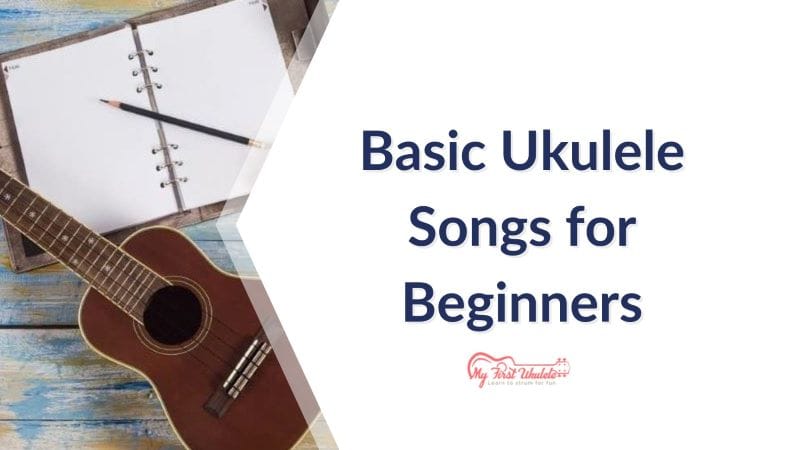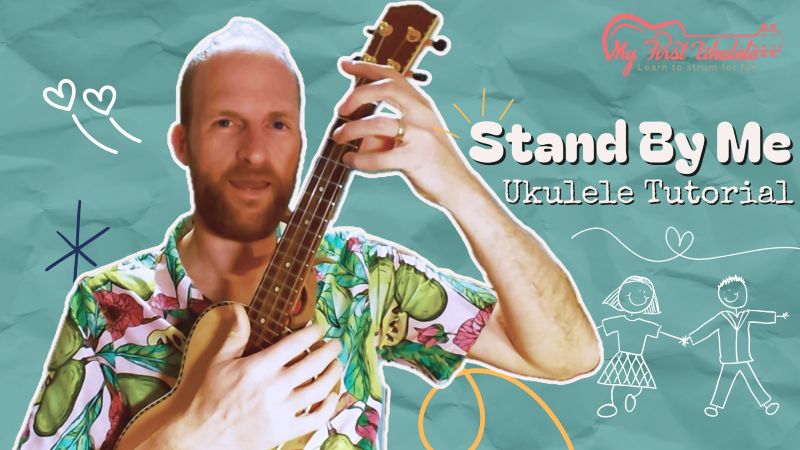Learning to play the reggae classic ‘Three Little Birds’ on ukulele couldn’t be easier – thanks to this detailed 2-key option tutorial.
Learning how to play Three Little Birds by Bob Marley on the ukulele is one of the most satisfying experiences for beginners. It’s feel-good, it’s timeless—and it only takes a few chords to get started. In this tutorial, I’ll walk you through how to strum and sing along in two different keys, depending on your vocal range and comfort level.
Whether you’re just picking up your uke or looking to add a reggae classic to your repertoire, you’ll find this a great place to start.
Here’s a free PDF download: Click here to grab a printable PDF containing the strumming patterns, chord diagrams, and lyrics to follow along with this lesson.
Option 1: How to Play Three Little Birds in the Key of A (Original Key)
If you’re comfortable singing in a higher range or love a vocal challenge, the key of A is where Bob Marley originally pitched it. You’ll need three chords: A, D, and E7.
A Chord
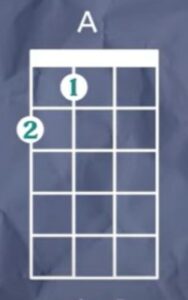
A = 2-1-0-0
This is your home base for the song. Nice and bright.
D Chord
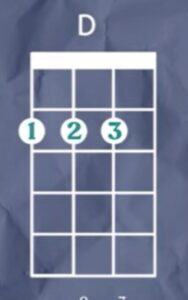
D = 2-2-2-0
I suggest playing this with fingers 2, 3, and 4, especially since it makes the transition from A smooth. Your middle finger can stay anchored during the switch.
E7 Chord
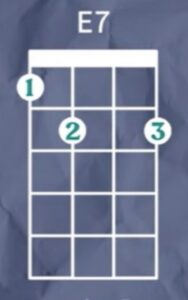
E7 = 1-2-0-2
This one adds that bluesy feel. It’s not too tricky, but do watch your hand positioning. The key tip is this:
Hold your hand like your fingernails are staring back at you.
This way, you’ll get closer to the frets (but not on top of them) for clearer sound—and you’ll find it more comfortable, especially if you’re standing or not using a strap.
Quick Tip: Know Your Voice
[A] Don’t worry about a thing…
[D] ‘Cause every little thing…
That top note might push you into falsetto. That’s great if you’re confident up there, but if it feels like a stretch, try the next key instead.
If you’re a higher-voiced singer (especially female), this key may suit you well. But for most beginners, the key of C offers a friendlier entry point.
Option 2: How to Play Three Little Birds in the Key of C (Beginner-Friendly)
This version uses simple beginner chords: C, F, and G (or G7). It’s perfect if you’re just getting started and only know a few chords.
C Chord

C = 0-0-0-3
I personally like to play this with my pinky—it feels more natural in this song—but the ring finger works fine too.
F Chord (or Fadd9)

F = 2-0-1-0
Or simplify it: Fadd9 = 0-0-1-0
If you’re playing a high-G uke, Fadd9 gives you that mellow sound with less finger effort. Win-win.
G7 Chord
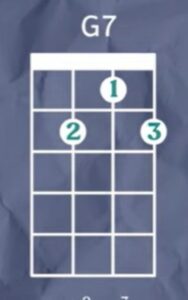
G7 = 0-2-1-2
I often teach G7 before G because it’s a little easier to find, and it flows nicely from F. It also sounds great in this tune because of its natural pull back to C.
Suggested Strumming Pattern for Three Little Birds
This song has a great groove that benefits from a touch of percussive feel.
Start by just muting the strings with your palm and strumming down on beats 1, 2, 3, 4.
Then add the chords in slowly. In the key of C, try:
Down – Down – Up – Mute – Up – Down – Up
[C] Don’t worry…
[F] ‘Bout a thing…
[G7] Every little thing is gonna be all right…
If strumming in time is tricky, practice slowly and use muted strums until your hand feels the rhythm.
Playthrough and Final Tips
Start by vamping on the home chord (either A or C depending on your chosen key). Then ease into the progression.
You’ll notice that singing in the key of A brings out more emotional punch, especially if you’re pushing your range a little. That’s why so many classic pop and reggae songs sit high—it just feels more alive.
If you’ve ever listened to Beatles tracks like Twist and Shout, you’ll know what I mean. Singing at the edge of your range brings raw emotion to the performance—and Three Little Birds is no different.
Final Thoughts
I hope this guide helped you learn how to play Three Little Birds on the ukulele in a way that suits your voice and playing level. Whether you sing it in A with confidence or start with an easy version in C, it’s a song that reminds us all not to worry—and that’s what music is all about.
Let me know in the comments what song you’d like to learn next or what uke technique you’re curious about.
Happy strumming!

John Allnutt
Writer & Ukulele TeacherJohn has been teaching music since 2008 and resides in Richmond, Kentucky with his wife Laura and dog Sam. In his spare time he enjoys growing and cooking food, roasting coffee, playing board games, and spreading joy through playing and teaching music.


